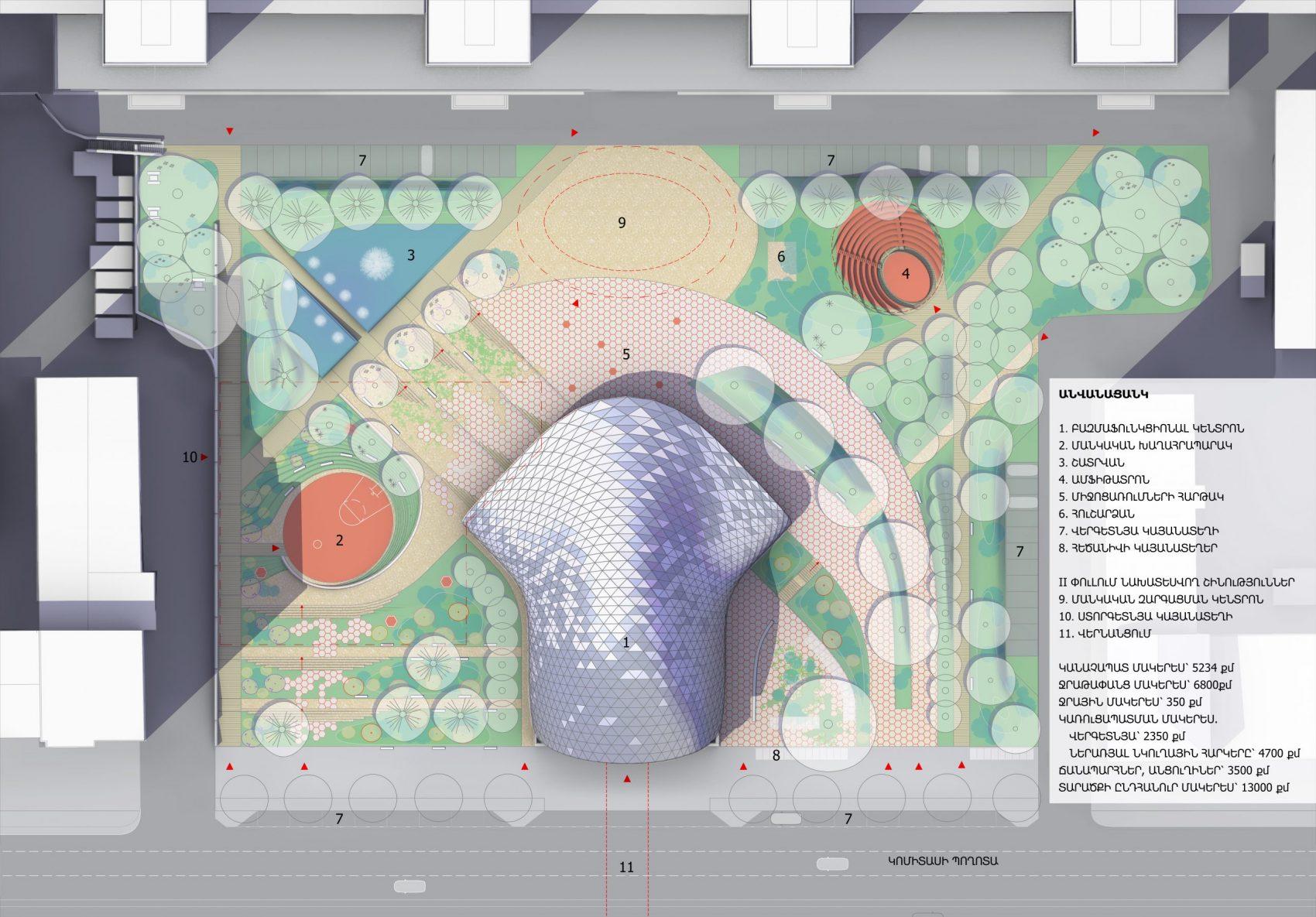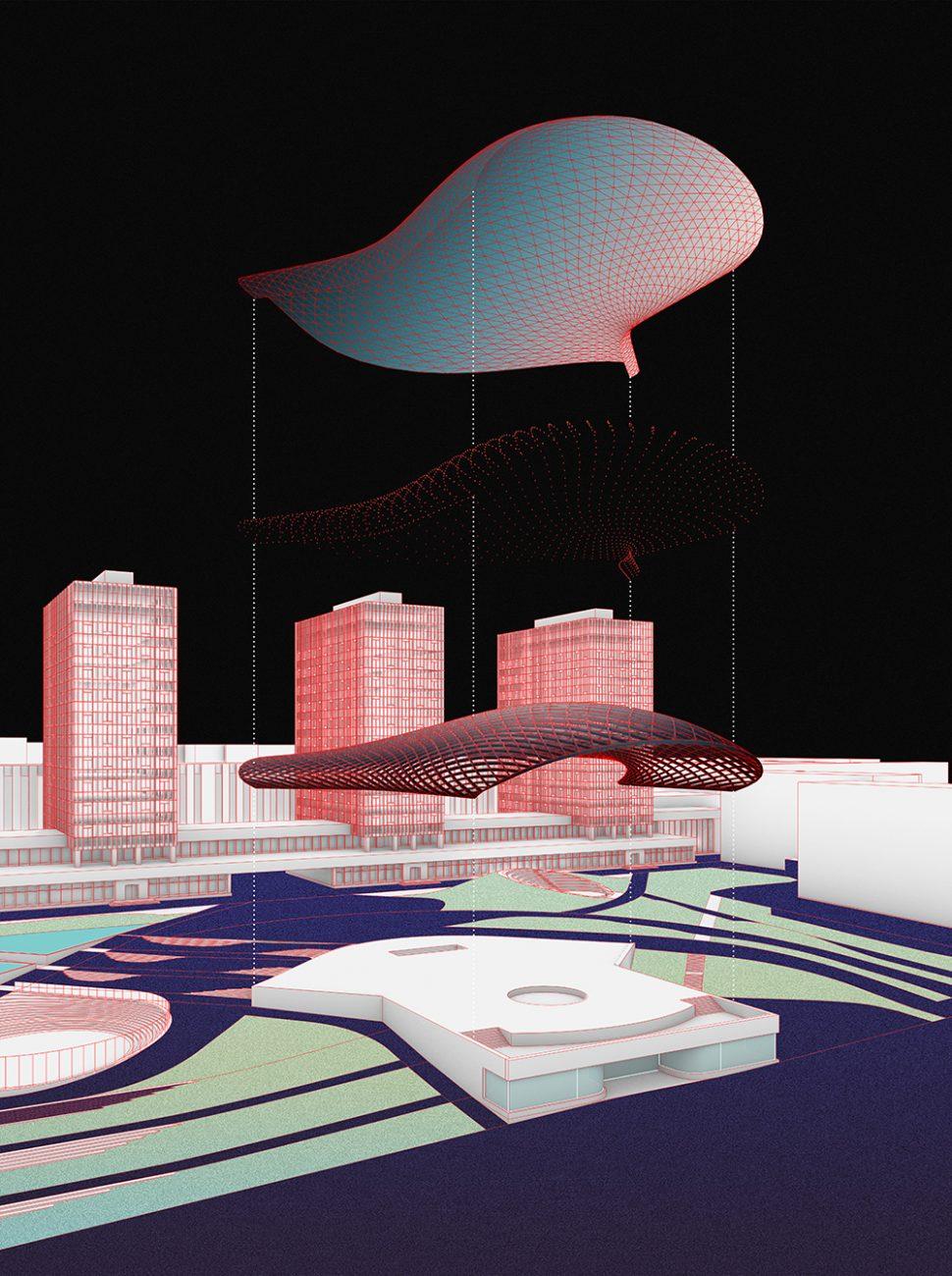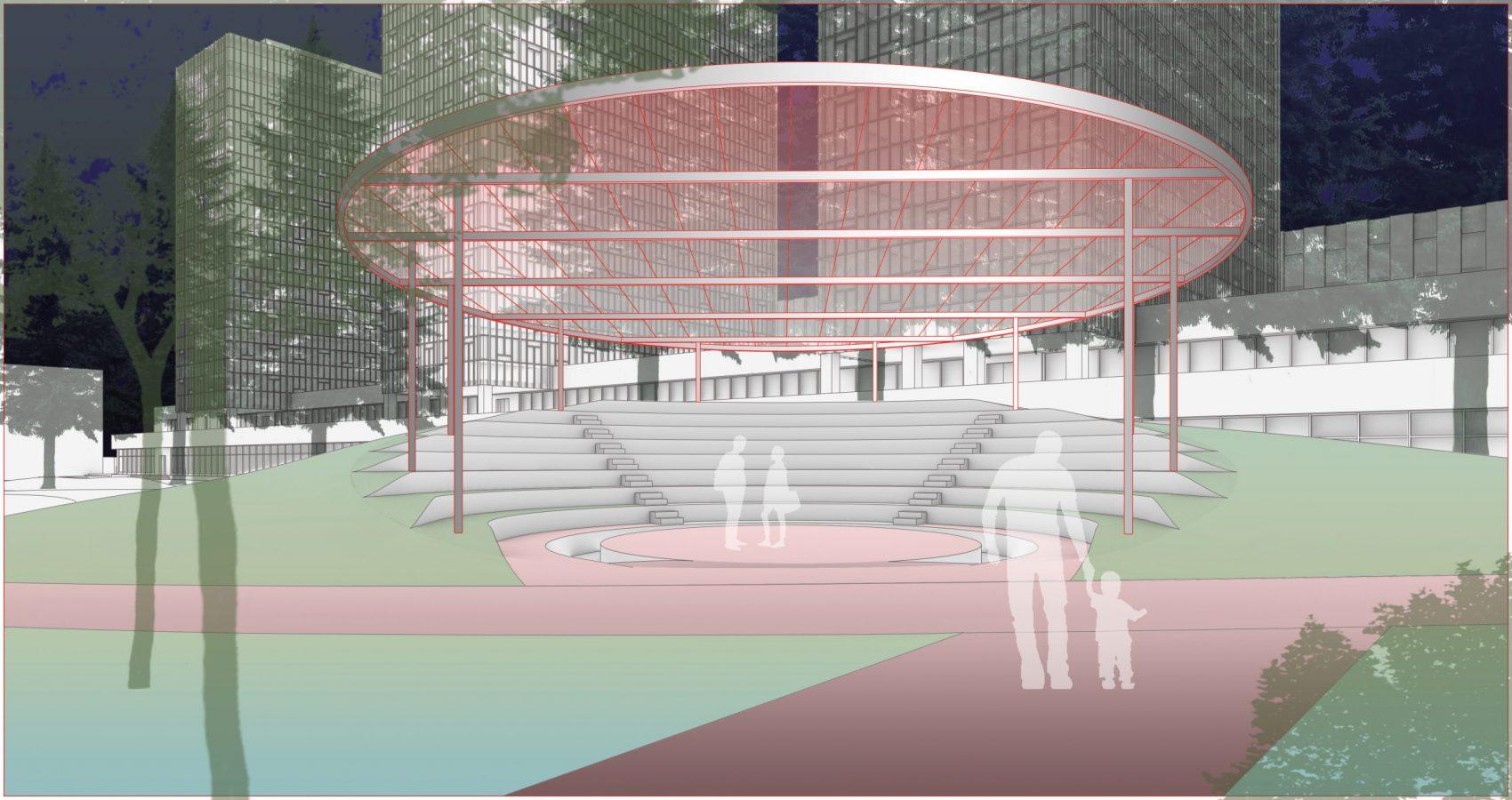Komitas Park, reconstruction project
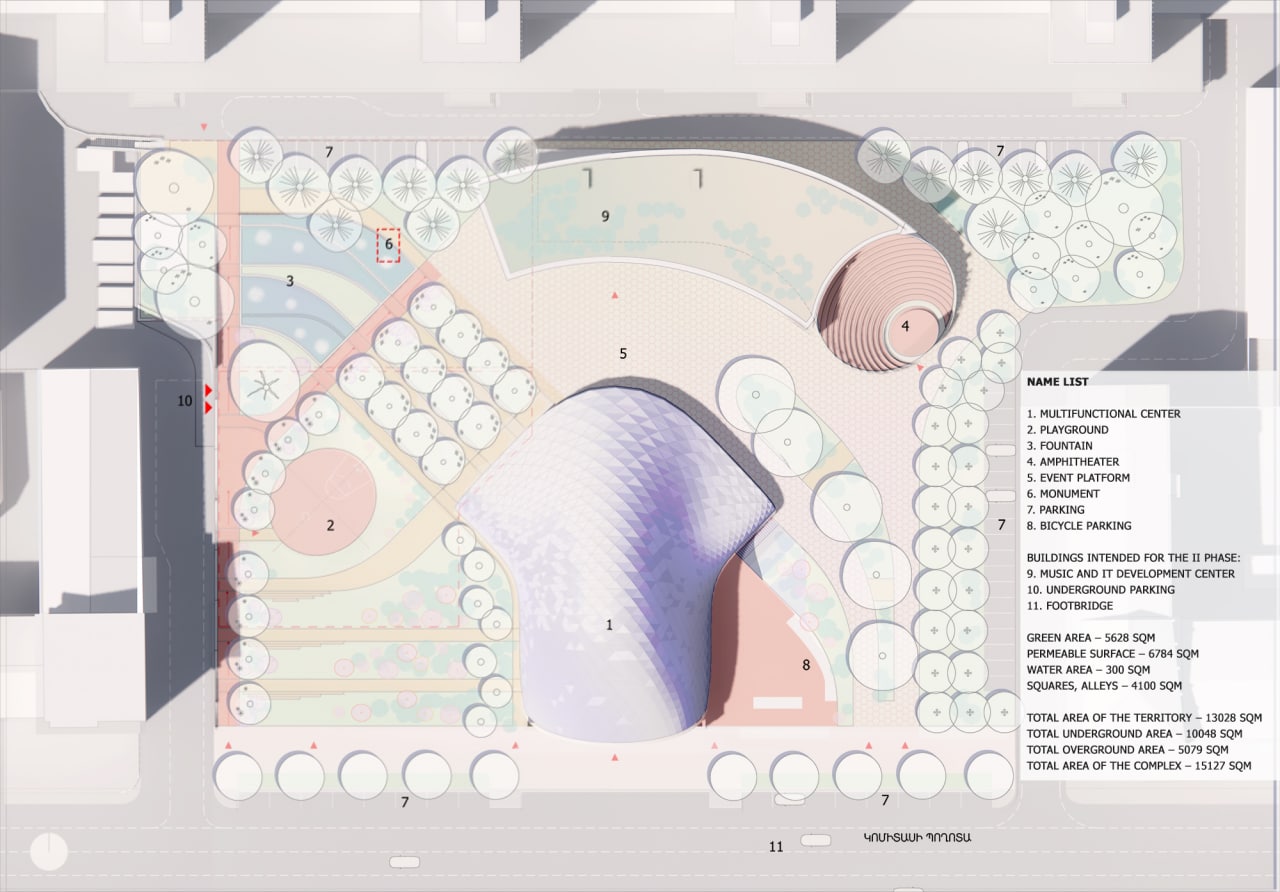
1. General information.
The project of a city park at intersection of Komitas ave. and North Axis with a total area of 140000 sq.m. performed by “Ithaka 999” LLC according to:
The project provides the following:
Construction of a multifunctional shopping and entertainment, business, recreational and gastronomic center with a total area of 4975 sq.m. on the site of the existing “Arabkir” store at the address: Yerevan, Arabkir community, Komitas avenue 49/9.

2. Natural and climatic conditions
Architectural and construction solutions are provided for the following conditions:
The considered territory is in a dry desert strip;
Dry, hot summers last more than 4 months;
The average monthly temperature in August is 22-26 degrees, and the maximum – 41.4 degrees;
In summer, mountain winds form, sometimes reaching 15-20 m / s in the afternoon:
The winter is moderately cold, static snow cover is not formed every year. In January, the average monthly temperature is from -4 to -6 degrees, and the minimum reaches -31: Thus, the absolute maximum and minimum temperatures are respectively 41.0 C o (August) and -31 C o (January):
The winds are mostly weak.
The territory is located in the northern part of the capital Yerevan at the altitude of 1181-1187 m above sea level.
The average annual air temperature is 11.5 Co:
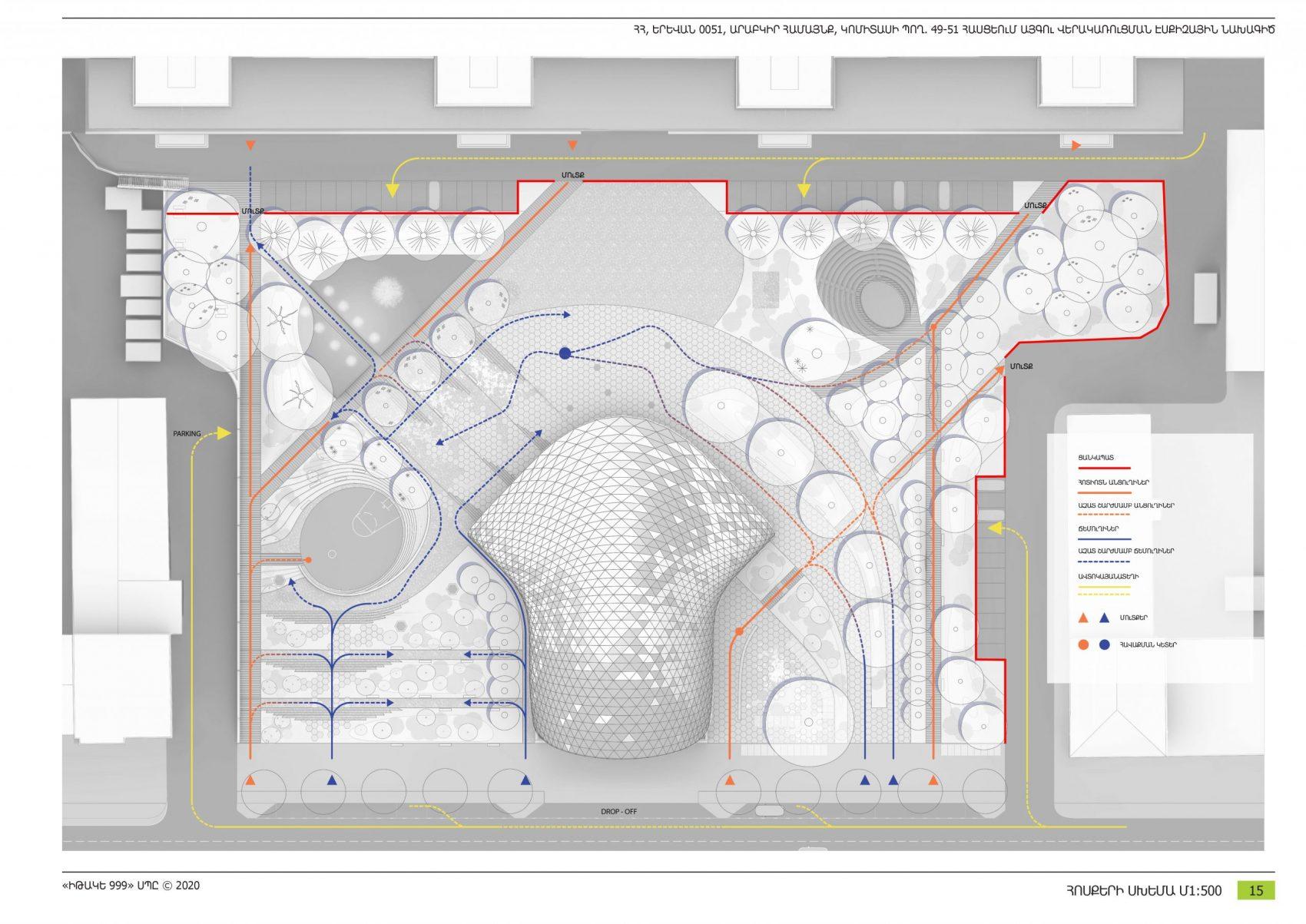
Dry climate is determined in the summer by the penetration of dry overheated air masses, and in winter by the northern cold air masses, which are cooled even more under subsequent anticyclone weather conditions.
In spring, rainfall is 141 mm, in summer – 53 mm, in autumn – 72 mm, in winter – 87 mm:
The amount of precipitation during the year is 353 mm.
Relative humidity ranges from 49% to 53% in the summer, 73% -77% in the winter, 53% -61% in the spring and 51% in the autumn, 70%.
The average annual relative humidity is 61%:
The preferred wind direction is northeast. In winter, there are often completely calm or light winds, which contribute to the stagnation of cold air in the cavity.
According to the observations, the calm weather during the year is 37%:
Direct sun rays during the year are 161.4 kW / cm2, the maximum was recorded in June – 21.4 kW / cm2, and the minimum in December – 4.6 kW / cm2:
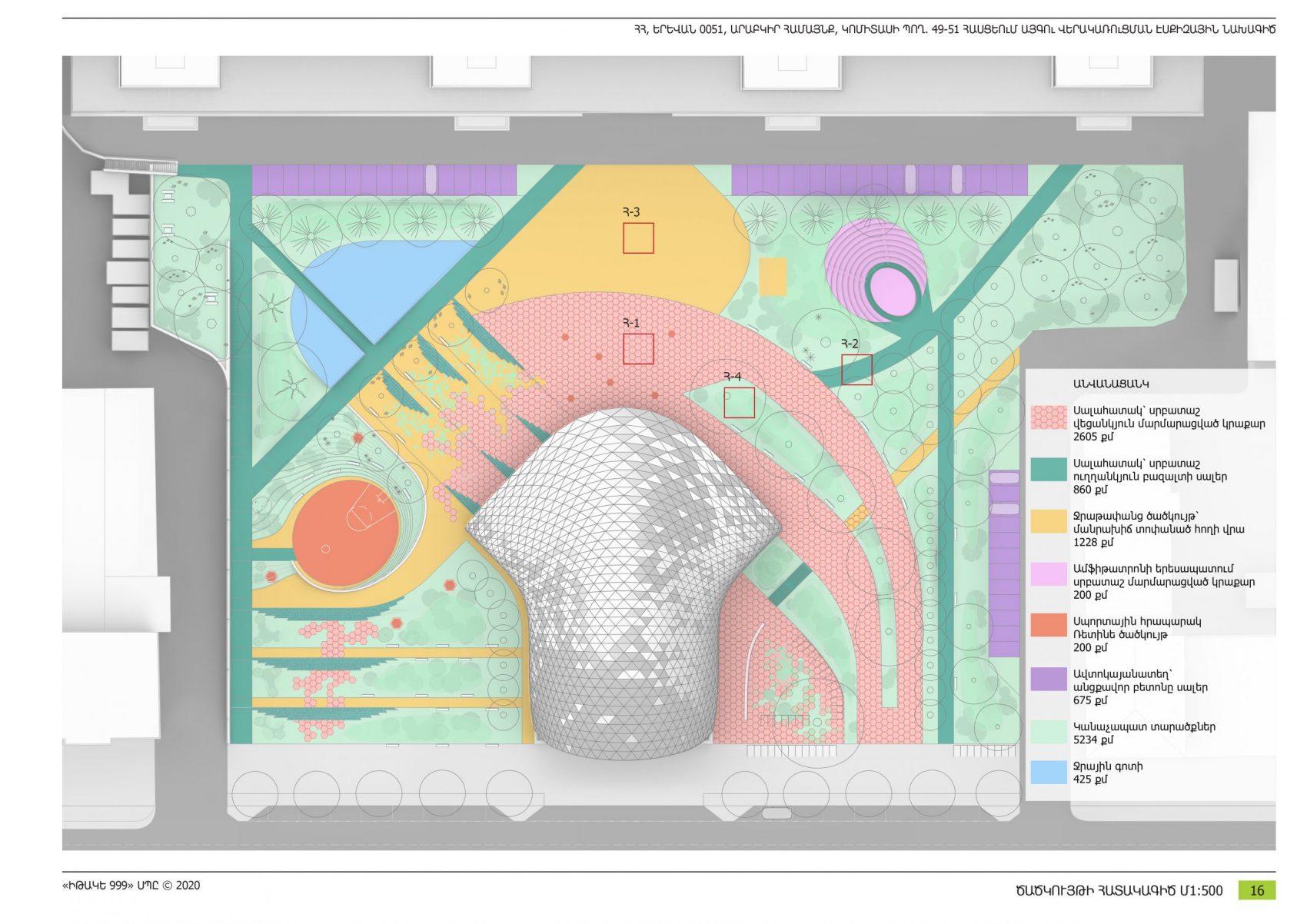
Diffuse irradiation is 25.1%; urban conditions (air pollution, color of buildings, roofs) significantly affect the albedo, thereby increasing or decreasing the effect.
The absolute sum of the annual radiation balance is 69 kW / cm2, the maximum was observed in July 10-12 kW / cm2, and the minimum in December – 0.5 kW / cm2։
The duration of sunshine on average is 2600 hours, the maximum reaches 2800 hours.
In summer, the ground surface heats up to 50 Co, and in some cases reaches 60 Co: In winter, on average, the soil freezes to a depth of 2-25 cm. In some years, it can freeze up to 45 cm. In summer, the earth is very dry and covered with cracks. In such conditions, growing plants without artificial irrigation is almost impossible.
The soil is rocky and semi-rocky.
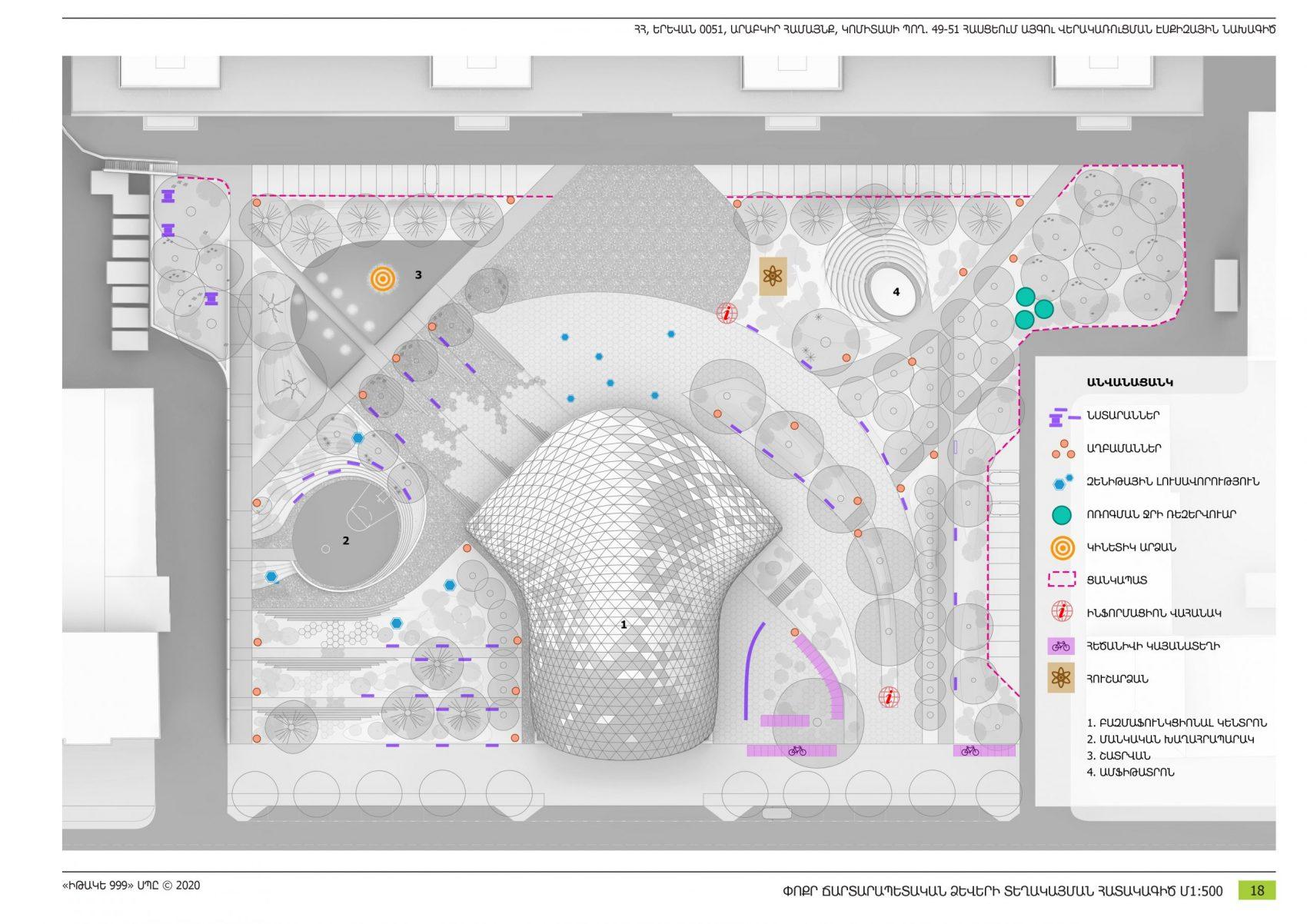
3. Historical town-planning essay.
The projected building is located in the Arabkir community of Yerevan. Initially, Arabkir was a separate settlement, for which Alexander Tamanyan developed a master plan in 1929. In this regard, Arabkir is represented as a separate, consisting of separate mansions, urban planning unit and is located in the central part of the modern district, with its center, surrounded by trees of the circular park.
This settlement was connected with Yerevan by three streets. Subsequently, urban planning documents were developed within the general plan of Yerevan and were associated with other areas of the city plan.

In 1938 Special ideas of the general plan were:
• Connection of Baghramyan street with Cheryomushki through the bridge
• Creation of an extensive green belt along the entire length of the railway
• Highlighting the north axis through which the green belt connects to the gorge system
In 1972 in the general plan:
• The idea of the North Axis is becoming more explicit. A community center is added here (see: Squares on the north axis, volumetric-spatial dominants, monuments, and implementation time p. 33)
• The northern axis in this section is emphasized by an alley that starts from four research high-rises and reaches Nairi Zaryan Street. From the point of view of urban practicality, the belt is the green axis that connects Komitas Avenue with Nairi Zaryan Street and a green recreational environment for the community.
According to the current project of zoning of the Arabkir community ՝ the priority immediate tasks of the community are the creation of public and green objects:
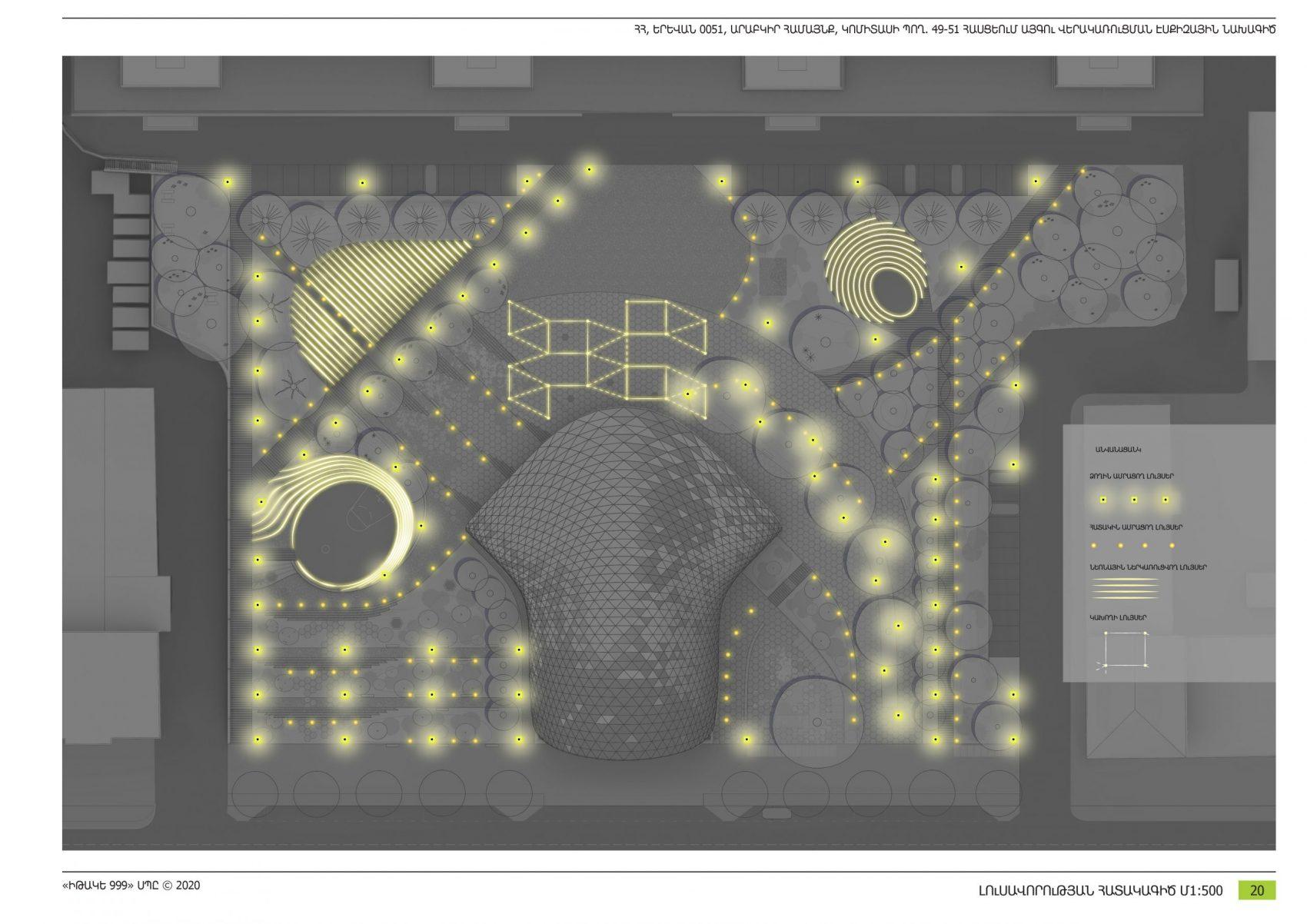
4. Small architectural forms, volumetric-spatial planning solutions
According to the developed general plan, the central part of the park is supposed to be made attractive and easily accessible from the South, i.e. from Komitas Avenue. From the South-East, a wide pedestrian alley lined with large hexagonal slabs is expected, which smoothly mates with the event area and seems to flow into it.
It is planned to dismantle the nearby small trade pavilions, reconstruct the square, as well as the former link – Northern Axis – Komitas Avenue.
From the South-West, using a significant difference in elevation /about 5 meters/ it is supposed to use alternating wide stairs with pronounced horizontal surfaces. The horizontal spans formed between the rows of stairs will be covered with rubble.
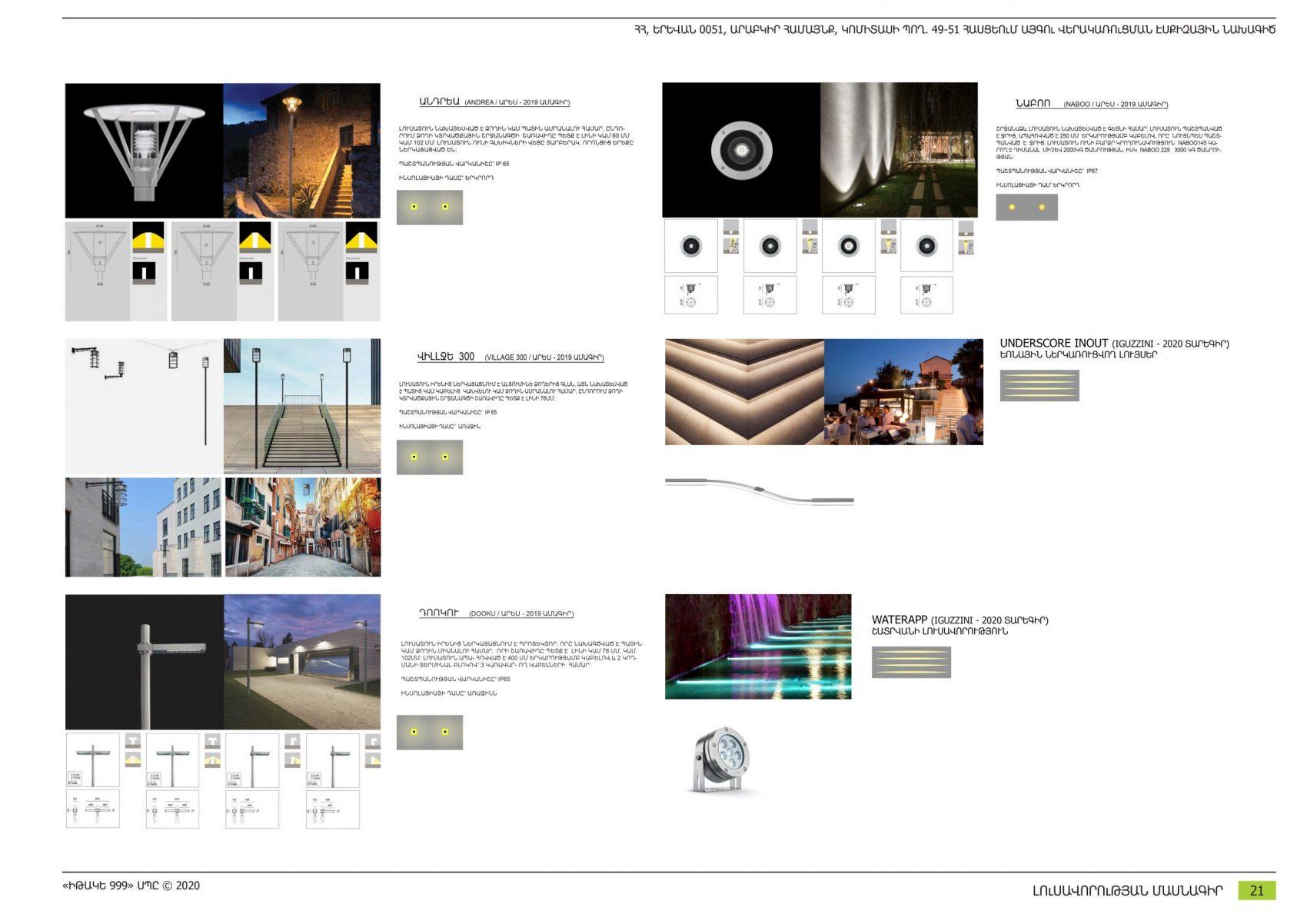
In addition to wide alleys, functional paths are planned to ensure unimpeded movement throughout the park. When developing the hiking trails, the network of paths that has already been trodden over a long time was taken into account, which creates a convenient pedestrian passage to the North.
According to the project, the following small architectural forms are assumed – a decorative fountain pool, an open amphitheater, playgrounds, sports and gymnastic grounds, a platform for events, land-art installations, kinetic sculptures, an exposition of traditional Armenian Vishapakars (dragon stones), fencing of the park in order to streamline movement pedestrian, lighting and didactic navigation banners.
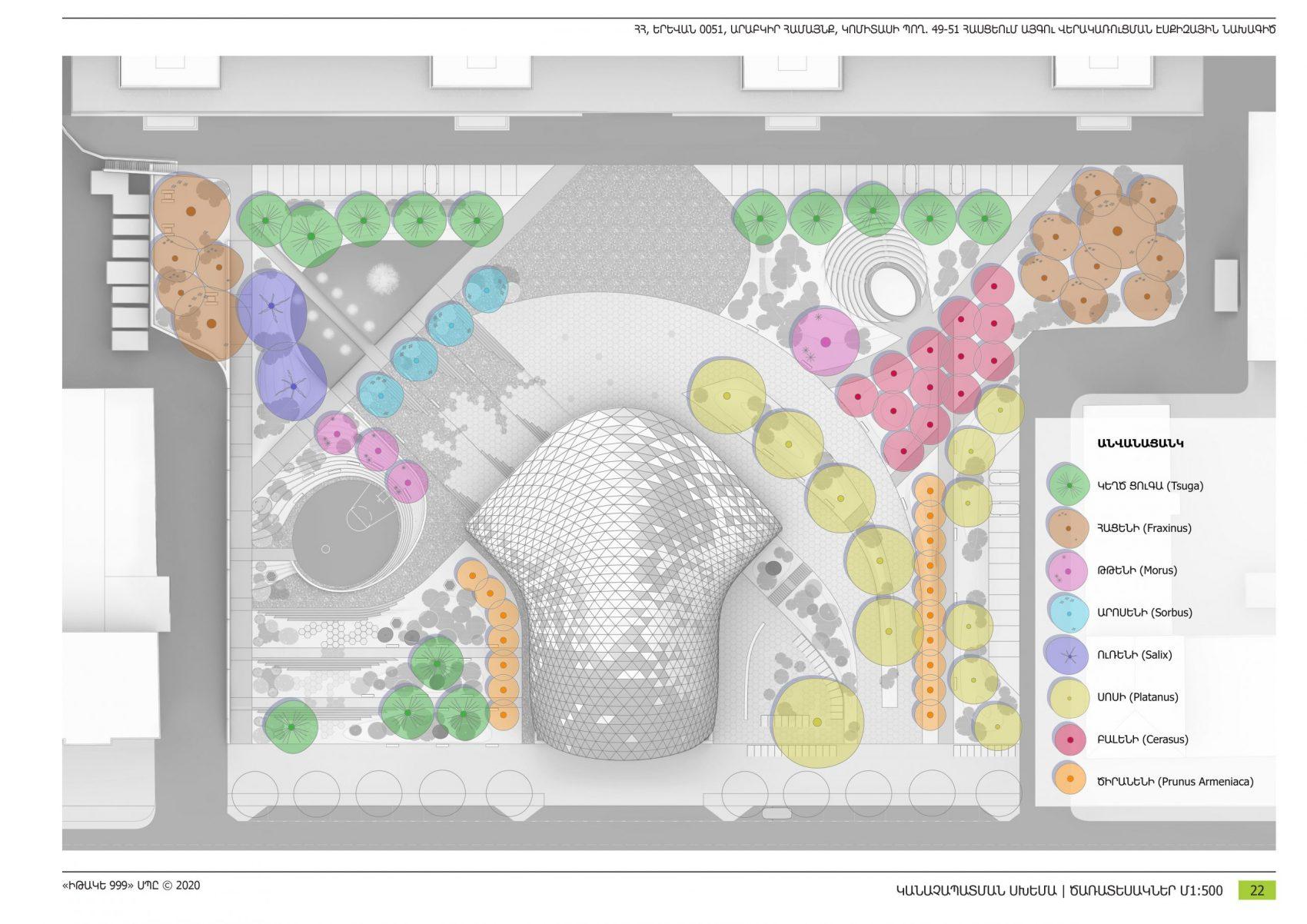
The alleys will be lined with massive hexagonal basalt and white-violet slabs of Artsakh marbleized limestone.
It is planned to enrich the existing flora by planting more than 30 new species of trees, shrubs and flowers. The selection of plants was carried out taking into account their endurance – according to the principle of adaptability to unfavorable urban conditions, dry and hot desert climate, frost resistance, longevity, and there should also be plants that are not too moisture-loving, with a powerful crown and rooting well in a new place.
The composition becomes integral due to the inscribed wide horizontal volumes of sports grounds and fountain pools.
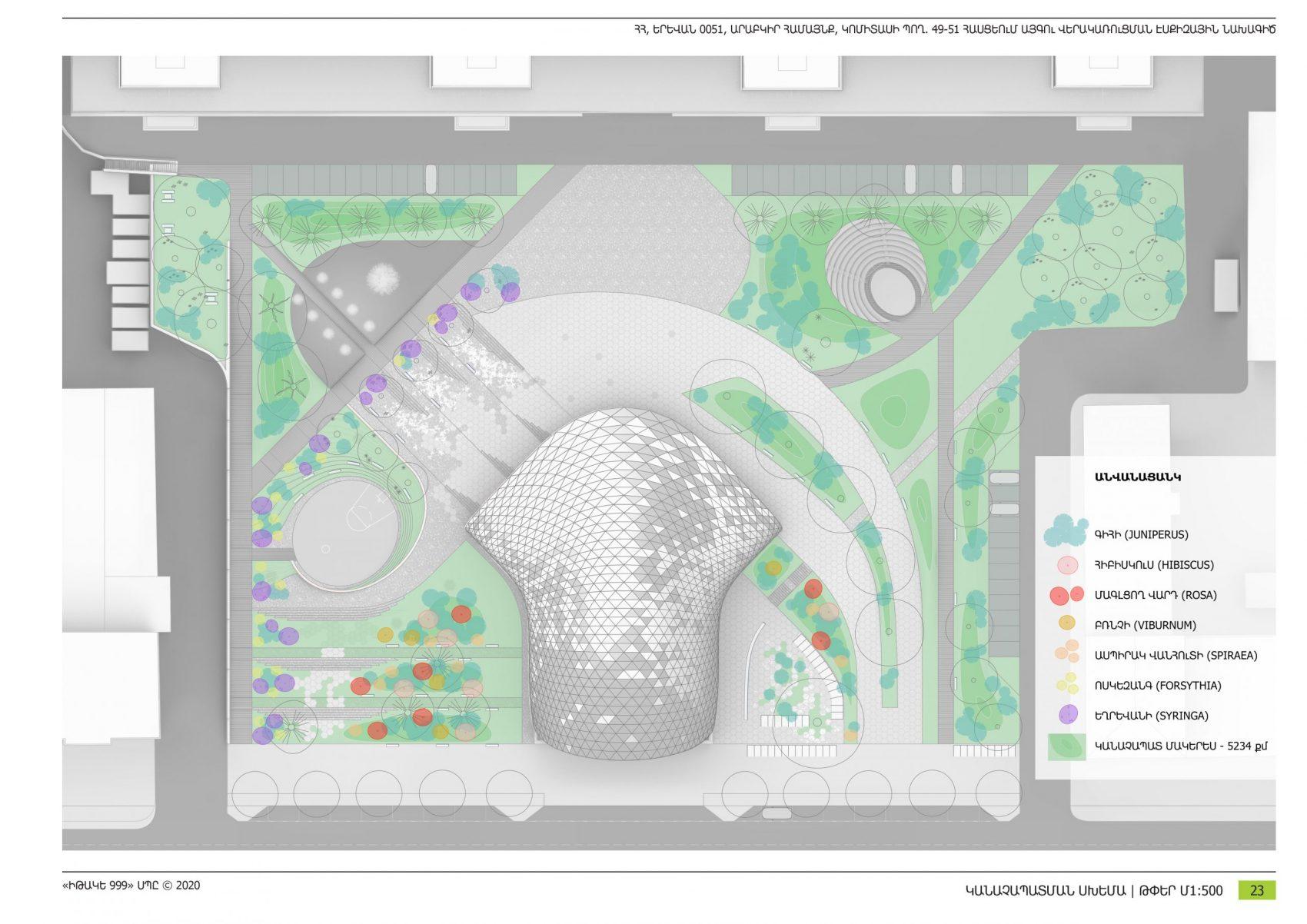
Based on the convenience of maintenance /near Komitas Avenue/ a small area is envisaged in the Eastern part of the multifunctional complex. There will be a service entrance and a bicycle parking area.
On the green part of the park, it is planned to form earth embankments, which will become a kind of landscape element. In the same vein, the amphitheater, in particular, was decided. It is made in the form of an ellipsoid, which is completely inscribed into the mound. For fencing and benches, it is envisaged to use white Artsakh marbleized limestone. There will be 7 rows and about 350 seats covered with a plexiglass dome. The total area of the amphitheater will be 254 sq. m. The amphitheater can be used both for concerts and as a summer cinema.
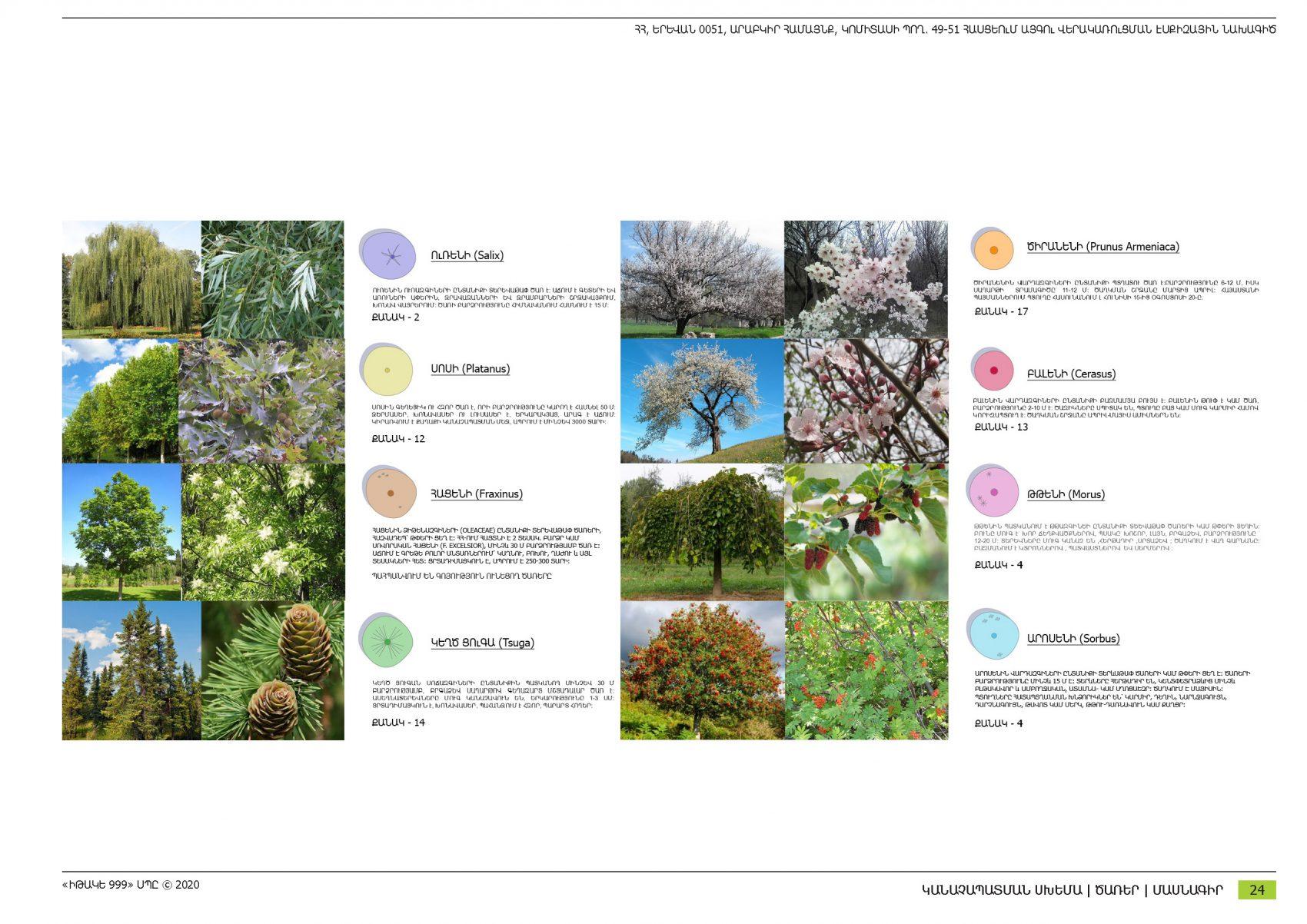
Director: Doctor of Architecture Telemak Alberti Ananyan
The Chief Project Architect: Doctor of Architecture Telemak Alberi Ananyan
Authors: Hayk Babkeni Martirosyan, Martina Giovani Rotilo
Parametric 3D Modeling and Graphics: Hayk Babkeni Martirosyan, Martina Giovani Rotilo
